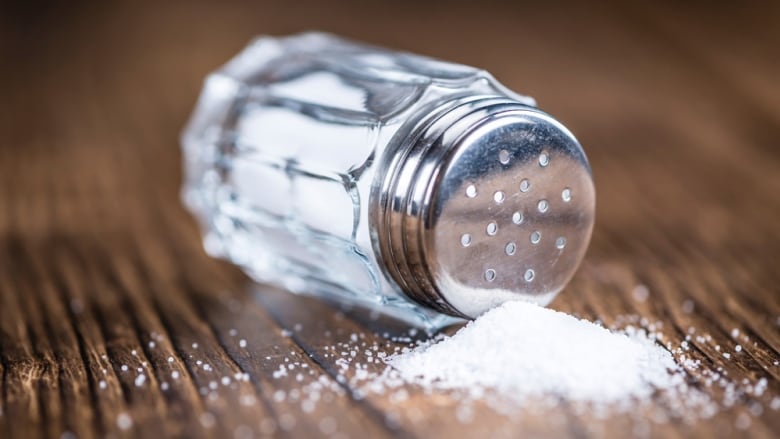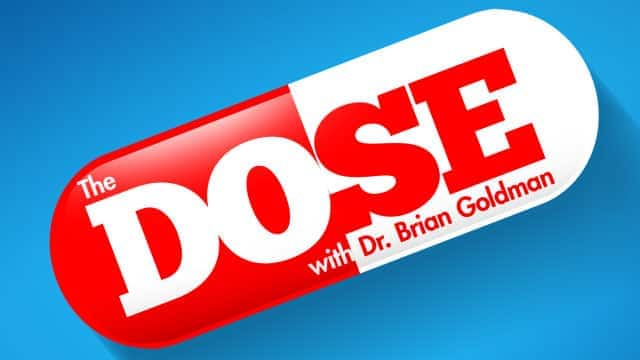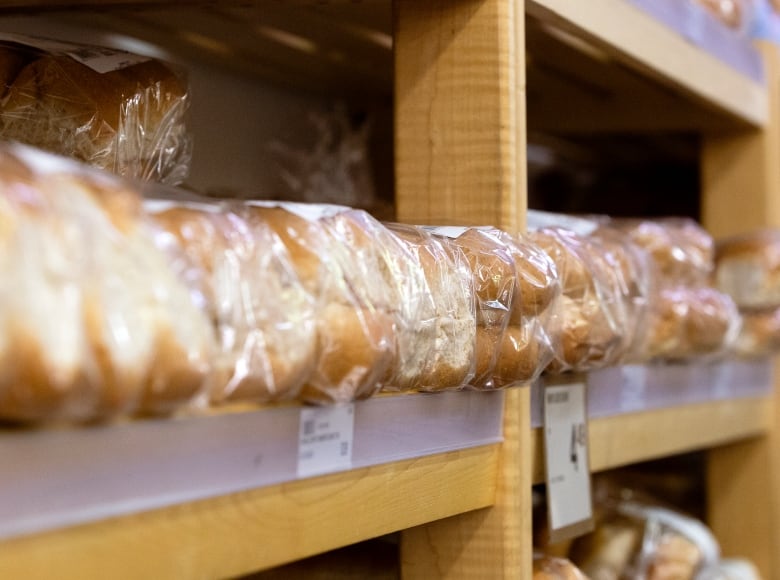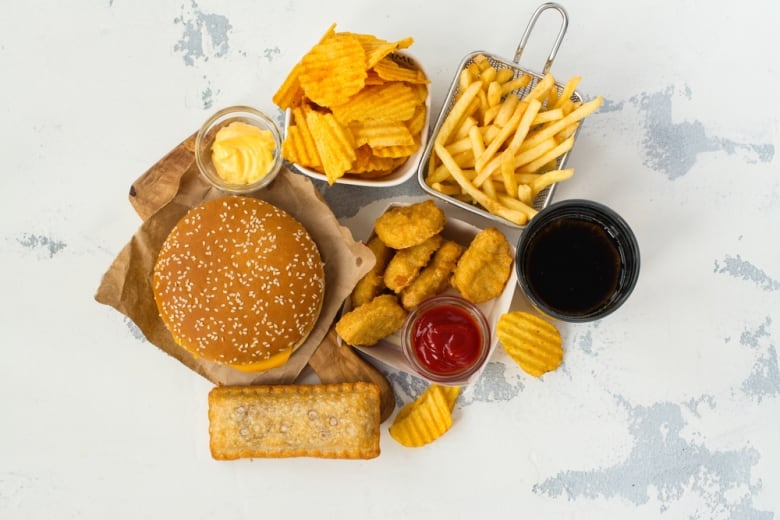You probably eat twice the recommended salt per day. Here's how to cut back
Most of the salt in our diets comes from restaurants and processed foods


Do you know how much salt you ate today?
Chances are it was more than one teaspoon, or five grams, which is the recommended daily intake of sodium from the World Health Organization (WHO).
A recent report from the WHO said that Canadians, on average, are consuming 9.1 grams of salt per day — nearly twice that recommended amount.
And the majority of that salt — more than 75 per cent — is coming from restaurant meals and processed foods, dietary experts say.
"The first thing I remind my patients of is that most of the salt they're getting is probably not the salt that they're adding. It's the salt that's already in their food," said Dr. Mary Sco, a family medicine resident at Women's College Hospital, who also has a PhD in nutritional sciences.

Besides restaurant meals, many common processed foods we buy at the grocery store contain high amounts of sodium.
"The three key big categories of foods that contribute the most sodium to our diets are bakery products, mixed dishes and processed meats," Samantha Chabior, a registered dietitian in Toronto, told CBC's The Dose host Dr. Brian Goldman.
Mixed dishes include things like pizza, lasagna and frozen dinners. Soup, cheese, sauces and condiments are also big contributors to sodium in our diets, said Chabior.
It can be surprising to people that products such as breads, muffins and cookies are often high in salt.
"These foods don't actually taste very salty. So I like to kind of call them sneaky sources of sodium because they're really unexpected," she added.
What does too much salt do to the body?
Sodium actually makes the body hold on to water, Chabior said.
"So when we eat too much sodium it can cause extra fluid to be pulled into our blood vessels, and puts that extra pressure on our blood vessels."
Over time, blood vessels become stretched by this pressure.
"They react by remolding, and becoming thicker and more tense, and then that increases your blood pressure in the long term," said Sco.
High blood pressure, or hypertension, is the most important risk factor for heart disease, said Sco, and heart disease is one of the main causes of death and disability in Canada.
In 2020, almost 54,000 people died of heart disease in Canada, according to Statistics Canada.
High blood pressure can also increase risk for stroke and kidney disease, said Sco. And that's not all.
"Salt makes people drink more. And if you're drinking more sugar-sweetened beverages or calorie-containing beverages because you're eating more salt, that can also be a problem," said Sco.
How can we cut back on salt?
Knowing all the risks associated with consuming excess salt is one thing, but making changes to our diets can be challenging.
The biggest tip from experts is to eat out less and cook at home using whole, unprocessed foods whenever you can.
Chabior advises focusing on whole fruits, vegetables, whole grains, legumes, nuts and seeds, and unprocessed meat, poultry and fish.
She recommends skipping the salt and adding these ingredients for flavour instead:
- Acidic foods like vinegar and lemon juice.
- Aromatics like ginger, garlic and onion.
- Fresh and dried herbs and spices.
- Pre-mixed salt-free seasoning blends.
Sco and Chabior acknowledged that cooking more whole foods at home can be challenging for some.
"There's the cost of food, which can be a barrier. Then there's also the amount of time and preparation that it takes to prepare healthy, home-cooked meals," said Sco.
"These processed foods tend to be usually a little bit cheaper, more affordable. So depending on someone's income or lifestyle, it might not be as feasible to cook more at home," Chabior said.
But swapping a salty snack like crackers or chips with a piece of fruit, unsalted nuts, or air-popped popcorn is a good first step, Sco said.
Reading nutrition labels is key
When grocery shopping, experts recommend reading nutrition labels to see how much sodium is in a product and then choosing one with a smaller amount.
"The per cent daily value can tell you if there's a little or a lot of a nutrient in the food. And when you see five per cent or less for sodium, that means the food is low in sodium," said Chabior.
"If it contains more than 15 per cent of the daily value, that means it's high in sodium."
It can be tricky to figure out how much you are getting in a day, she said, so Chabior recommends her patients use an online sodium tracker.
When eating out, check the restaurant's website ahead of time to look at nutrition information, which most big chains provide, said Chabior.
And remember those hidden sources of sodium.
"Whether it's the breads that are part of our appetizer or dips, if there's sauces or gravies, try to ask for those on the side," Chabior said.
WHO recommends mandatory regulations
Despite our best efforts, however, it's tough to cut back on salt, said Dr. Norm Campbell, emeritus professor of medicine at the University of Calgary.
"That's why we really need population approaches, government approaches with regulations."
For years Campbell has been advocating for more government regulations around sodium in Canada.
He said a national strategy for sodium reduction was created in 2010, but implementation has been "very slow."
Sco said sodium warnings on the front of packaged processed foods that contain excess sodium are expected to arrive in Canada in the next couple of years, which would help consumers make more informed choices.
"The first step is to just make sure we're giving people as much information about the sodium content of their foods as possible," Sco said.
Other jurisdictions have gone further than Canada to create government regulations around both sodium warning labels and maximum sodium levels in certain foods.

In 2015, New York City began requiring its chain restaurants to add warning labels to any meal that includes more than the daily recommended sodium intake.
Argentina brought in a comprehensive law in 2022 that includes mandatory front-of-package warning labels about excess sodium, as well as excess sugars and fats.
Will my taste buds adjust?
There can be a lot of reluctance to reduce salt because of the change in taste, Sco said.
"People notice when there's less salt in a food," she said.
"But research has shown that, gradually, as you decrease the amount of sodium that you're eating, your taste buds actually recalibrate and they become more sensitive to the taste of salt."
That means it is possible for manufacturers to reduce sodium levels and still create an appealing product, said Campbell.
"When we talk to manufacturers or individuals, we ask them to change their salt intake more gradually so that they don't notice any change in the quality or taste of the food," he said.
Chabior agrees with a gradual approach, and said it's OK to eat salty foods sometimes.
"The small changes really do add up. We don't have to go all or nothing," said Chabior.

